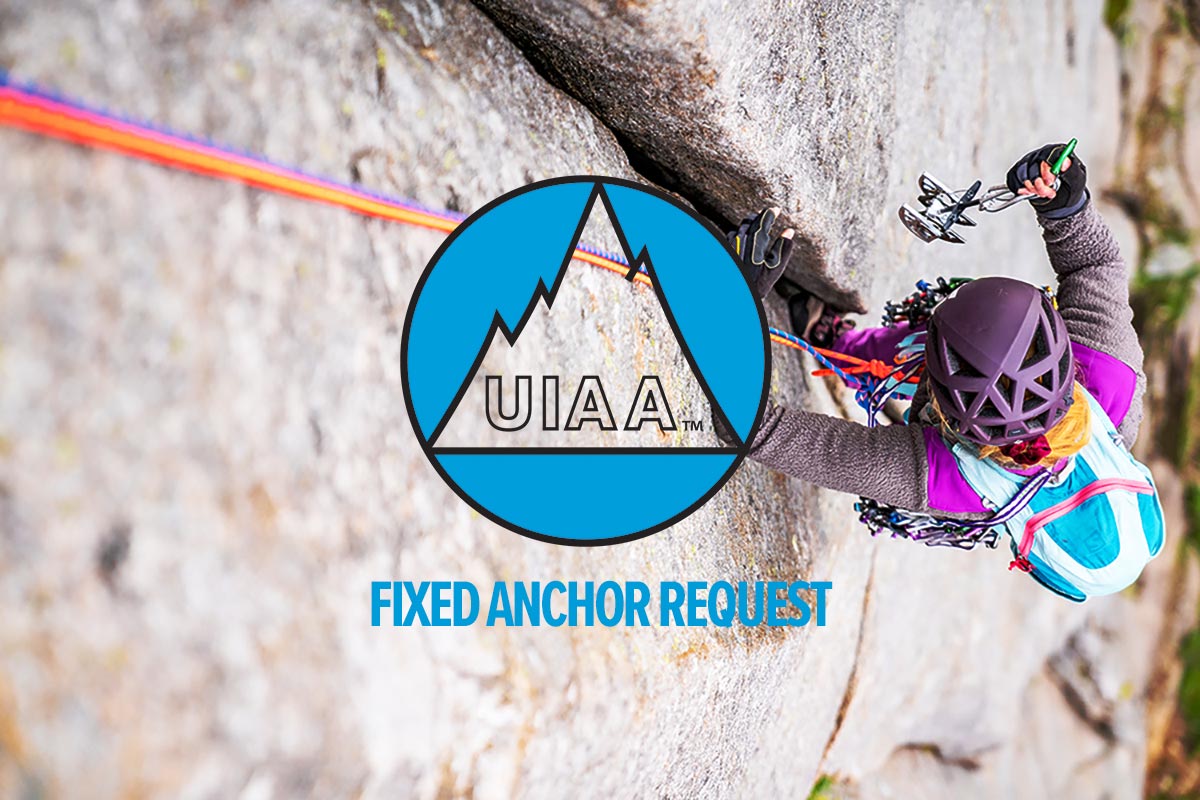The UIAA Safety Commission (SafeCom) is seeking top anchors for evaluation and testing.
Background
Welding is a critical process in the manufacture of climbing top anchors. In the best of circumstances welding is a difficult to control process; manual welding of stainless steels is particularly challenging and post-welding heat treatment is expensive and not standard practice among climbing manufacturers. The composition of the welding wire, the weld penetration and cleanliness, and the final weld microstructure are important factors determining resistance to corrosion. There is a growing concern about the older, non-316 stainless steel anchors.
Types of components
The UIAA Safety Commission is seeking stainless steel anchors with welded components. The anchors sought for testing may be single hangers with welded rappel ring(s), welded chain terminating in a ring, or two hangers with welded chain connecting to a single ring. The latter is the most desirable as it supplies the largest number of welds for testing.
Research shall be focused on:
- Weld penetration %
- Weld rod material composition (should be in spec. and same alloy as ring)
- Weld microstructure (can indicate if sensitized or not, whether post or pre-weld heat treatment was done)
- Ring composition
- Tensile strength testing
Caution
Older anchors were designed and manufactured when Stress Corrosion Cracking (SCC) was not acknowledged as a serious problem. As a result, they may be more prone to failure and should be monitored and used with caution in environments where SCC could possibly occur. The necessary factors to cause SCC have been shown to exist in urban environments and as far as 200km inland – if any signs of corrosion are present on stainless steel anchors it is safest to replace them in their entirety.
Results
Findings will be made available on the UIAA website once completed.
How to help out
Contact your national climbing federation (a list of UIAA member associations can be found here) and see if they will collect anchors to send to UIAA Safety Commission.
National climbing federations (and others) can contact the nearest UIAA Safety Commission member (see below).
The UIAA can pay for shipping of the test anchors but will not replace the old anchor with new equipment. This shall be left to the federation or local climbing communities. Please contact your federation before taking the anchor down. Testing is expensive and there is a limit to how many tests can be performed.
Anchors to send to UIAA
Please send anchors as soon as possible, preferably before 23 December, 2020
The anchors should:
- have the manufacturer’s name clearly marked on them
- have information on place of installation; area, crag, sector, route etc. or address to climbing wall (per anchor)
It would also be useful to have the following information (per anchor):
- approximate purchase date
- approximate installation date
SafeCom Delegates
Brazil: Frederico Campos Martins dos Santos
France: Alexis Mallon
Germany: Julia Janotte
Portugal: Alexandre Velhinho
Sweden: Per Forsberg
Switzerland: Lionel Kiener
USA: Stephen Gladieux
For further information about the UIAA and Mountain Safety please click here.
To contact the UIAA Safety team please email safetylabel@theuiaa.org
Article by Lionel Kiener, SafeCom President and Per Forsberg, Working Group Leader



